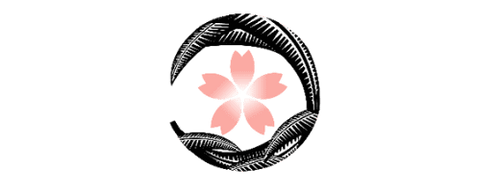Kimono Term Glossary
Learn the Kimono related vocabularies
AMA COAT
- Rain coat for kimono
AWASE
- Awase is a type of Kimono that has an inner and outer layer. Lined Kimono.
CHIRIMEN
- Chirimen is a type of fabric that has tiny wrinkles all over it. When Chirimen is woven, normally non-twisted sting is used vertically and the strongly twisted sting is used horizontally. Chirimen Kimono is recommended to wear Oct through May.
DATEJIME
- Datejime is a flat wide cloth that is tied below the bust to stabilize the area. One for "Nagajuban" and one for "Kimono" is normally used.
EBAMOYOU
- The dyeing style that has a connected design from the shoulder, arm, okumi, eri (collar), and sode (sleeve). The whole Kimono looks like a canvas of one big piece of art. This design style is often used for "Furisode".
EDOKOMON
- A type of Komon that has a very tiny motif all over the Kimono. Because the design is so small, it looks like "Iromuji" from far.
ERISHIN
- Erishin is put through in-between "Haneri" sawn on to "Nagajuban" to make the Eri (collar) shape nice.
FUKURO-OBI
- Fukuro-obi is a type of Obi. The front side has a design and the backside is plain. The width is 30cm (11.8") and the length is 4.2m (165"). It is normally a very thick Obi. It is a formal Obi.
FURISODE
-
Furisode is the highest rank Kimono for unmarried young women. Furisode has very long sleeves. It can be worn to the wedding, seijinshiki (cerebration to become an adult), graduation, etc...
GETA
- Geta is the sandals for Yukata. It looks like flip-flops with a wooden sole and heels and fabric straps. For some Geta, a rubber sole is also attached to prevent the wooden heels from being shaved by rubbing on the ground. At first, you may get some discomfort wearing Geta due to its design. As you wear it more often, the fabric will be softened and you will be able to wear it without discomfort.
HADAJUBAN
-
It is a underwear for Kimono. This is the first thing to put when you wear a Kimono. "Hadajuban" ---> "Nagajuban" ---> "Kimono"
HANERI
- Haneri is a collar that is sewn onto the "Nagajuban" to avoid the Kimono collar getting dirty.
HANHABA-OBI
- Hanhaba-Obi is a very casual Obi that is often worn with a Yukata. Its width is half the size compared with other types of Obi. han = half , haba = width
HANTEN
- Hanten is a Japanese winter jacket. It has fluffy cotton inside and very light weight and warm. Relaxed fit jacket and it goes well with western clothing as well.
HEKO-OBI
-
It is a type of Obi that has shibori and it is very soft. It is considered as a casual obi and often worn by children with their yukata and also by men with a casual Kimono.
HOUMONGI
- Houmongi is a type of Kimono that has designs on the bottom, shoulder, and sleeves. This Kimono can be worn to the places such as graduation parties, weddings, etc...
IKOU
- Ikou is a Japanese Kimono stand. Iko stand and a Kimono would make an excellent Japanese-themed room interior.
IROMUJI
- A Type of Kimono which only has one tone color. Iromuji is considered semi-casual -semi-formal depends on the design.
JINBEI
- Jinbei is a very casual 2-piece summer Kimono. It has a short sleeve kimono top and medium-length shorts. Jinbei can be worn outside or inside as a pajama. Since Jinbei is very comfortable and easy to wear, it is the most popular summer clothing among men in Japan.
JUBAN
- An Undergarment of Kimono. The first thing you wear is called "Hadajuban" and then you wear a "Nagajuban" or "Hanjuban".
KANZASHI
- Kanzahi is a women's Hairpiece worn with a Kimono or Yukata.
KITSUKE
- Kitsuke is a process of wearing a Kimono.
KOHAZE
- Kohaze is a small metal hook attched on "Tabi".
KOMON
- Komon is a type of Kimono that has the same pattern (small or large) all over it. It is considered a casual Kimono.
KOSHIHIMO
- Koshi = waist. Himo=rope. Koshihimo is a long thin cloth tied around the waist to hold "Juban" and "Kimono".
MITAKE
-
Mitake is the length of the Kimono which is measured from the top of the shoulder to the bottom of the Kimono hem.
MOFUKU
- Mofuku is plain black Kimono with 5 crests which is worn at the funeral. Accessories such as Obi and Obijime should be black also.
MON (KAMON)
-
Mon is a crest that shows the House Hold's noble. The amount of Mons on Kimono will change the rank of Kimono. It is 1, 3, or 5 mons on Kimono. 5 Mon Kimono is being the highest rank Kimono.
NAGAJUBAN
- It is a long one-piece undergarment for Kimono. It is worn over the "Hadajuban" and underneath the "Kimono". The Purpose of wearing Nagajuban is to avoid the Kimono getting dirty and stained from sweat etc... You attach the "Haneri" to the "Nagajuban" collar for this reason.
NAGOYA-OBI
- It is a type of Obi which is considered somewhat casual. This Obi is used to make "Otaiko-Musubi" (Square-shaped obi knot).
OBIAGE
- A long piece of cloth is used to keep the shape of the "Obi" knot neat and to hide the obi makura.
OBIDOME
-
Obijime is a piece of small kimono jewelry that you will use with obijime string. It is decorated over the obi.
OBIITA / MAEITA
- Obiita is a long circular thin plate that is inserted in between "Kimono" and "Obi" to keep "Obi" stays neat.
OBIJIME
- A long string (rope) that is tied over the obi to keep the "Obi" stable and to provide some accent.
OBIMAKURA
- Obimakura is used when you create "Otaiko Musubi" (square-shaped obi knot). A Larger Obimakura is recommended for young people and a smaller Obimakura is recommended for mature people.
SAMUE
- Samue is very similar to Jinbei (2piece-kimono) but with long sleeves and long pants. Unlike other types of kimono, you do not need to learn how to tie an obi and it is very comfortable to wear. Therefore, it is a very popular garment among men.
SHIBORI
- A type of dye technique. The fabric is pinched, sawn, or tie up when it's dyed to create this uneven yet unique patterned design. Shibori is considered very gorgeous and of high-status. Full Shibori "Kimono" and "Obi" can be very pricey.
SUSOYOKE
- Susoyoke is a long wrapping skirt that is worn on top of the underwear to avoid showing your legs when you walk or move around and also to move the legs easily.
TABI (SOCKS)
- Tabi is a sock for Kimono. Tabi separates the thumb and other toes.
TAIKO-MUSUBI
- It is a style of tying an Obi. With Taiko-musubi, you will have a large square bow on the back.
TANMONO
- Tanmono is a rolled-up Kimono fabric which length is right enough to make one Kimono. Average Tanmono is 14.5" in width and 492" in length.
TATOUSHI
- Tatoushi is a special Japanese paper that is used to wrap the Kimono to prevent damage from moisture, moth, etc...
TSUKESAGE
-
Tsukesage is a type of Kimono that has a design on the kinono bottom, sode (sleeves), and eri (collar). Unlike Houmongi, the design may not be connected as one piece of art.
TSUKURI-OBI
- It is a flat belt with a pre-tied bow. It is recommended for someone who is new to Kimono or someone who wants to spend less time wearing Kimono. With this Obi, You do not have to struggle to make a perfect bow shape or to worry about the bow getting loose or asymmetrical. Because of its ease, it is getting very popular.
YUKATA
- Yukata is considered a Summer Kimono or a Casual Kimono. Japanese Yukata is made of cotton or linen for comfort. Yukata are worn by Men and Women, Boys and Girls.
YUUZEN
- Yuuzen is a very colorful and artistic dying technique and the fabric that is made with this technique. The name Yuuzen came from the original creator of this technique, Yuuzen Miyazaki. There are 3 types obi Yuuzen. "Kyou Yuuzen", "Kaga Yuuzen", and "Edo Yuuzen".

